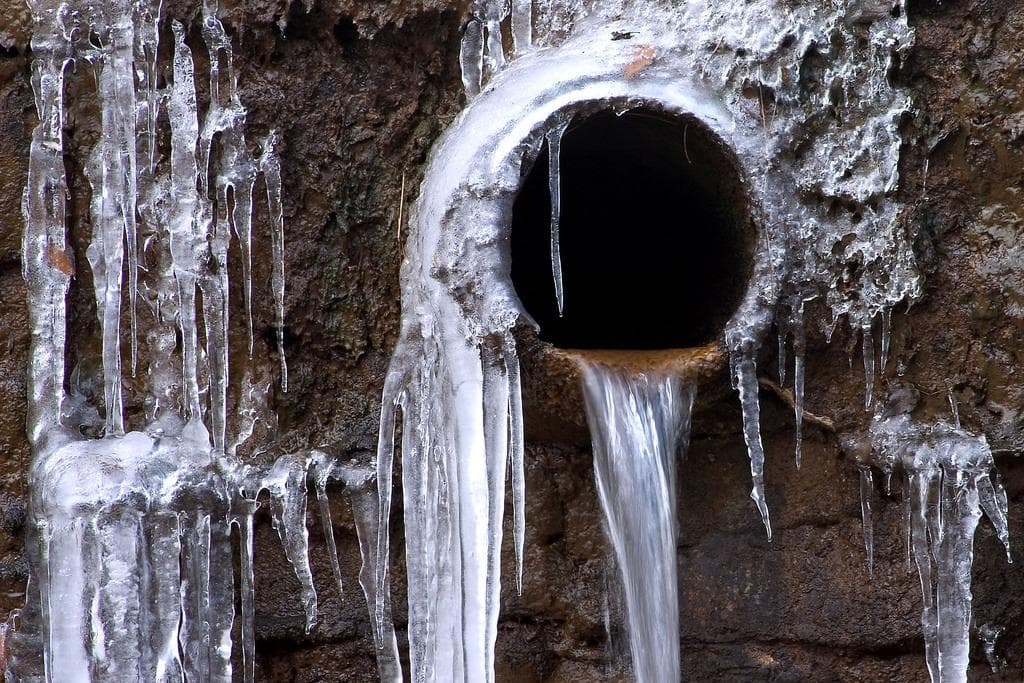We've uncovered this post on Helpful Tips to Prevent Frozen Pipes this Winter listed below on the web and thought it made sense to write about it with you here.
:strip_icc()/snow-outdoor-faucet-pipes-4af65d1e5e904fb1aa7bf74071fe5d89.jpg)
Winter can damage your pipes, specifically by freezing pipes. Here's just how to avoid it from occurring and what to do if it does.
Introduction
As temperature levels decrease, the threat of frozen pipes rises, possibly bring about costly fixings and water damage. Understanding just how to stop frozen pipes is crucial for home owners in chilly climates.
Recognizing Frozen Pipelines
What causes pipes to freeze?
Pipelines freeze when subjected to temperatures listed below 32 ° F (0 ° C) for prolonged periods. As water inside the pipelines ices up, it broadens, taxing the pipeline walls and potentially causing them to rupture.
Dangers and damages
Icy pipelines can cause water system disruptions, residential property damages, and costly repair work. Ruptured pipelines can flooding homes and create comprehensive structural damage.
Indications of Frozen Pipeline
Identifying icy pipes early can stop them from breaking.
Just how to determine icy pipes
Seek decreased water flow from faucets, unusual smells or sounds from pipes, and visible frost on subjected pipelines.
Prevention Tips
Insulating prone pipelines
Cover pipes in insulation sleeves or utilize warm tape to secure them from freezing temperatures. Focus on pipelines in unheated or exterior locations of the home.
Heating strategies
Maintain interior spaces effectively heated, particularly areas with plumbing. Open cabinet doors to permit cozy air to circulate around pipes under sinks.
Protecting Outside Plumbing
Yard tubes and outside taps
Separate and drain garden tubes before winter season. Set up frost-proof spigots or cover outdoor taps with shielded caps.
What to Do If Your Pipes Freeze
Immediate actions to take
If you presume frozen pipes, keep taps available to soothe pressure as the ice thaws. Use a hairdryer or towels soaked in hot water to thaw pipes slowly.
Long-Term Solutions
Architectural adjustments
Take into consideration rerouting pipelines far from outside walls or unheated locations. Add additional insulation to attics, cellars, and crawl spaces.
Updating insulation
Invest in high-quality insulation for pipes, attic rooms, and wall surfaces. Appropriate insulation helps preserve regular temperature levels and lowers the danger of icy pipelines.
Final thought
Stopping icy pipelines calls for aggressive steps and fast feedbacks. By comprehending the reasons, indications, and safety nets, house owners can secure their pipes during cold weather.
5 Ways to Prevent Frozen Pipes
Drain Outdoor Faucets and Disconnect Hoses
First, close the shut-off valve that controls the flow of water in the pipe to your outdoor faucet. Then, head outside to disconnect and drain your hose and open the outdoor faucet to allow the water to completely drain out of the line. Turn off the faucet when done. Finally, head back to the shut-off valve and drain the remaining water inside the pipe into a bucket or container. Additionally, if you have a home irrigation system, you should consider hiring an expert to clear the system of water each year.
Insulate Pipes
One of the best and most cost-effective methods for preventing frozen water pipes is to wrap your pipes with insulation. This is especially important for areas in your home that aren’t exposed to heat, such as an attic. We suggest using foam sleeves, which can typically be found at your local hardware store.
Keep Heat Running at 65
Your pipes are located inside your walls, and the temperature there is much colder than the rest of the house. To prevent your pipes from freezing, The Insurance Information Institute suggests that you keep your home heated to at least 65 degrees, even when traveling. You may want to invest in smart devices that can keep an eye on the temperature in your home while you’re away.
Leave Water Dripping
Moving water — even a small trickle — can prevent ice from forming inside your pipes. When freezing temps are imminent, start a drip of water from all faucets that serve exposed pipes. Leaving a few faucets running will also help relieve pressure inside the pipes and help prevent a rupture if the water inside freezes.
Open Cupboard Doors
Warm your kitchen and bathroom pipes by opening cupboards and vanities. You should also leave your interior doors ajar to help warm air circulate evenly throughout your home.

We are very excited about Helpful Tips to Prevent Frozen Pipes this Winter and I hope you appreciated the blog entry. Do you know about someone else who is interested by How to Prevent Your Pipes From Freezing? Be sure share it. Thanks a lot for your time. Don't forget to stop by our blog back soon.
View More
Comments on “Avoiding Frozen Plumbing: Best Strategies for Cold Weather”